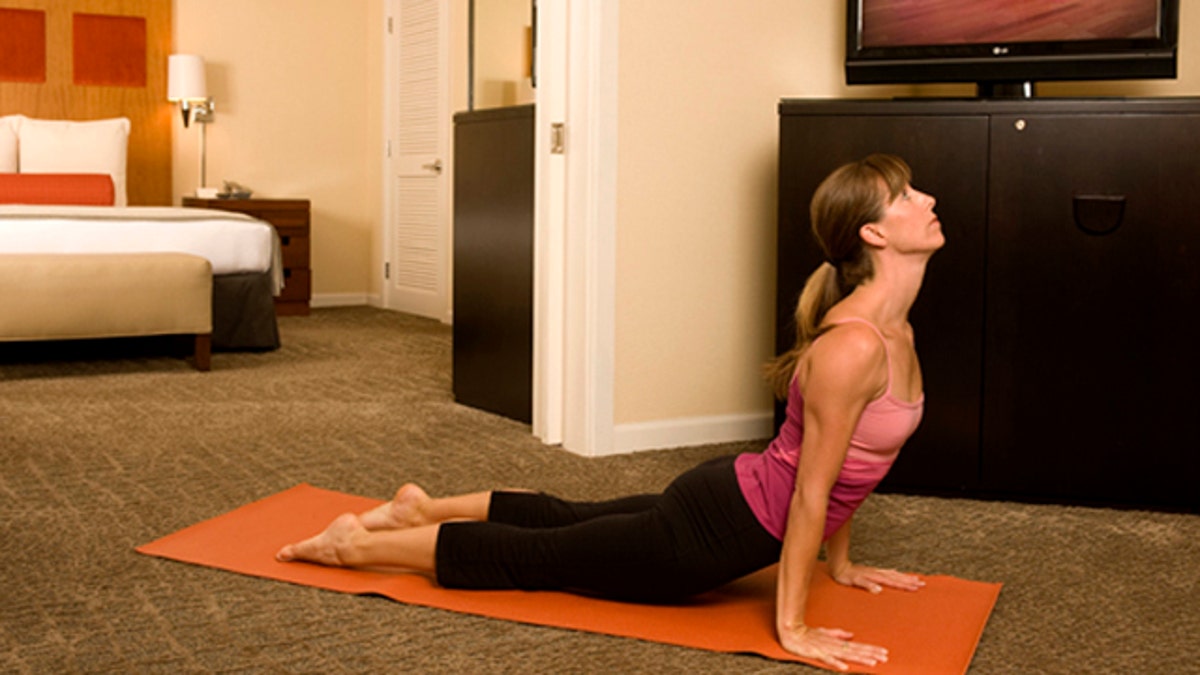
A woman practices yoga in Kimpton's Hotel Palomar in San Francisco, California. (Reuters)
Once a week, Kara Weberg takes to a yoga mat and practices abdominal-strengthening and balancing poses. That is, until her 2-year-old son scampers into the living room and pounces on her.
Ms. Weberg, a 41-year-old working mother in Bloomington, Minn., used to do yoga regularly in a studio. But since the birth of her son, she has found it easier to call up digital classes via cable TV or on her phone through Pinterest.
“I can do it when it suits my schedule, and I can find a workout that I like,” Ms. Weberg says. “Sometimes when you go to a class, you’re not sure what the workout will entail.”
Digital yoga classes are booming, fueled by smartphone apps, websites and offerings for on-demand TV. YouTube viewers watched 5,500 years—yes, years—of videos tagged “yoga” in 2014, more than double the number viewed a year earlier, according to YouTube data. Free offerings are becoming more sophisticated, and paid services offer access to celebrity instructors, specialized workouts and burgeoning libraries.
About 24 million people in the U.S. did yoga at least once in 2013, and participation has been increasing by 6.5% annually, according to the Sports and Fitness Industry Association. More than 44% of people who don’t practice yoga are interested in trying it, a survey commissioned by Yoga Journal found.
Digital yoga lets beginners try it out away from strangers’ gaze, and without investing much—or anything. It allows longtime practitioners to squeeze in short workouts or continue their practice when they’re away from their regular studio.
“The rate of growth of our subscription and app content is phenomenal,” says Cyd Crouse, chief operating officer of yoga-gear giant Gaiam Inc.
